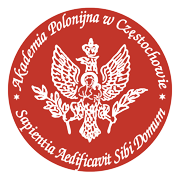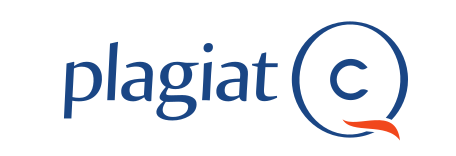GUIDELINES FOR STATE POLICY TO PROMOTE THE ADOPTION OF NEW TECHNOLOGIES IN THE WORKFORCE
Abstract
The development of human capital, as well as the accelerated digitalization of the economy, are absolute priorities of the EU economic policy. The article analyzes the state policy of the EU countries aimed at introducing the latest human capital management technologies in enterprises. It is shown that the EU countries are actively developing, introducing and implementing state programs for financing, lending, subsidizing the introduction of the latest technological products both in the business processes of companies in general and in the HR sphere in particular. The priority areas of state policy to encourage the introduction of the latest human capital management technologies in enterprises are highlighted. At the same time, the difficulties and problems faced by individual countries (primarily Latvia) in the implementation of these processes are shown. The purpose of the article is to propose directions for improving state policy to increase the efficiency of implementing the latest technologies in the practice of human capital management of enterprises.The main stages and elements that are proposed to be included in the structure of the state program are highlighted: defining the goals and objectives of the program; analysis of the current situation; development of digital infrastructure; training and development; stimulation of innovation; performance assessment; support and financing; transparency and reporting. To achieve the set goal, the following research methods were used: comparative analysis; abstract-logical method; methods of deduction, theoretical generalization, classification; dialectical method and methods of theoretical generalization.
References
2. Azmuk, N., Grishnova, O., & Kuklin, O. (2020). Digital employment: Ukraine's ranking in the global division of digital labour. Financial and Credit Activity – Problems of Theory and Practice, 2(43), 380–391. https://doi.org/10.55643/fcaptp.2.43.2022.3578
3. Cascio, W. F., & Montealegre, R. (2016). How technology is changing work and organisations. Annual Review of Organizational Psychology and Organizational Behavior, 3(1), 349–375. https://doi.org/10.1146/annurev-orgpsych-041015-062352
4. Dabić, M., Maley, J. F., Švarc, J., & Poček, J. (2023). Future of digital work: Challenges for sustainable human resources management. Journal of Innovation & Knowledge, 8(2). https://doi.org/10.1016/j.jik.2023.100353
5. Directorate-General for Communications Networks, Content and Technology. (2022). Digital Spain agenda 2026. Retrieved from https://tinylink.info/1b6wN
6. Directorate-General for Communications Networks, Content and Technology. (2020). Poland – Digital Competence Development Programme (2020–2030). Retrieved from https://digital-skills-jobs.europa.eu/en/actions/national-initiatives/national-strategies/poland-digital-competence-development-programme
7. Directorate-General for Communications Networks, Content and Technology. (2022). Denmark – National strategy for digitalization 2022–2026. Retrieved from https://digital-skills-jobs.europa.eu/en/actions/national-initiatives/national-strategies/denmark-national-strategy-digitalization-2022-2026
8. EMDESK. (n.d.). Horizon Europe. Retrieved from https://www.emdesk.com/horizon-europe
9. European Union. (2021). Latvia – Digital transformation guidelines 2021–2027. Retrieved from https://tinylink.info/1b6gX
10. European Union. (2023). Latvia – Cybersecurity strategy 2023–2026. Retrieved from https://tinylink.info/1b6jT
11. European Union. (2024). Digital decade strategic roadmap for Latvia 2030. Retrieved from https://tinylink.info/1b6lr
12. French Tech Mission. (2024). French Tech Next40/120. Retrieved from https://lafrenchtech. gouv.fr/en/programme/french-tech-next40-120/
13. German Federal Ministry for Economic Affairs and Climate Action (BMWK). (n.d.). Official website. Retrieved from https://www.bmwk.de
14. Grishnova, O., & Kondratiuk, I. (2024). System of indicators for assessing the efficiency of using the newest technologies in human capital management. Baltija Publishing. https://doi.org/10.30525/978-9934-26-459-7-95
15. Gruppo SICURFORM S.r.l. (2023). Fondo nuove competenze: cos’è e come funziona – proroga per il 2023. Retrieved from https://www.grupposicurform.eu/fnc
16. Kalenyuk, I., Grishnova, O., Tsymbal, L., Djakona, A., & Panchenko, E. (2020). Formation of intellectual corporate capital: Methods and modern trends. Bulletin of the National Academy of Sciences of the Republic of Kazakhstan, 1(383), 182–191. https://doi.org/10.32014/2020.2518-1467.23
17. Nalog.nl. (2022, August 16). The Netherlands again in the top three digital leaders of the EU. Retrieved from https://www.nalog.nl/uk/news/2022/08/16/niderlandy-snova-v-trojke-ci-frovyx-liderov-es/
18. The Innovation in Politics Institute. (2023). Digital transformation of education (EdTech). Retrieved from https://innovationinpolitics.eu/showroom/project/digital-transformation-of-education-edtech/
19. TIEKE Finnish Information Society Development Centre. (n.d.). Official website. Retrieved from https://tieke.fi/en/home/
20. Viguerie, S. P., Calder, N., & Hindo, B. (2021). Corporate longevity forecast 2021. Innosight. Retrieved from https://www.innosight.com/insight/creative-destruction/
Abstract views: 14 PDF Downloads: 11







